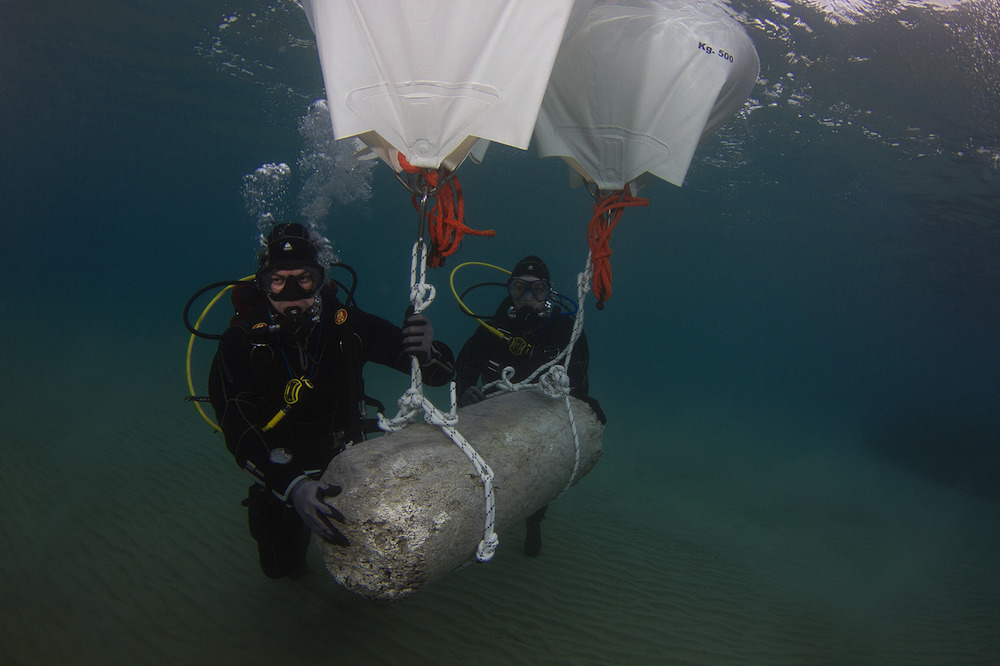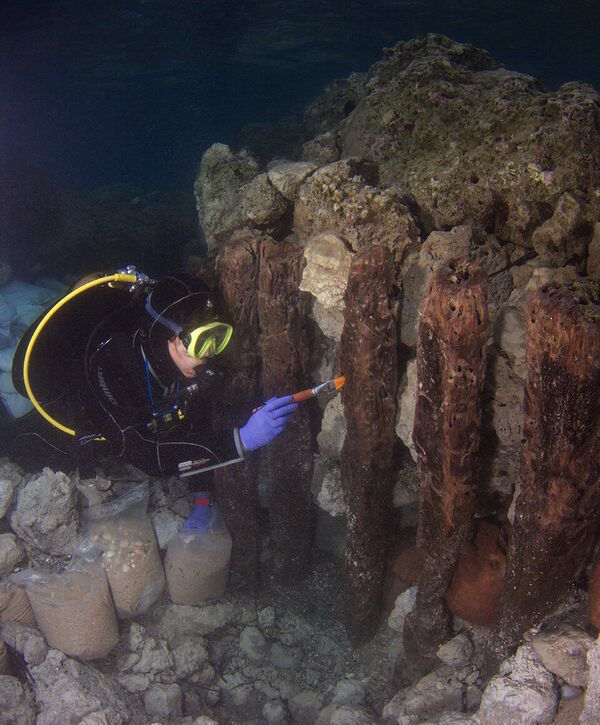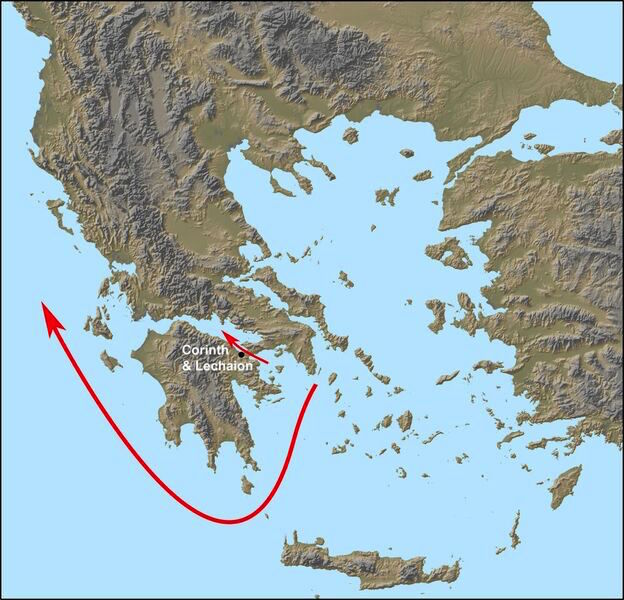Harbor Near Ancient Corinth Turned It Into a Trading Hotspot

When nautical visitors sailed into the ancient Grecian city of Lechaion, they would have first encountered a monumental entrance leading to several inland canals, all of which were connected to no fewer than four harbor basins, Greek and Danish archaeologists reported in an announcement last week.
These findings, discovered by underwater divers over the course of three excavation seasons, indicate that Lechaion — one of two harbor towns used by the people of ancient Corinth — was a far more important town than historians previously realized, the researchers said.
During the excavations, the researchers did topographical and geophysical surveys to help them chart the canal zone between the inner and outer harbors, said Bjørn Lovén, the co-director of the Lechaion Harbour Project and an associate professor of archaeology at the University of Copenhagen in Denmark. [Beauty of Greece Dazzles from Space (Photo)]
"In the process, we discovered that the entrance canal connecting the inner and outer harbors was up to 30 meters [98 feet] wide in the fourth and third century B.C., then grew narrower in later centuries," Lovén said in a statement. "The precise reason why remains to be discovered."
The new assessments show that, in its entirety, the Lechaionharbor was more than 5.3 million square feet (500,000 square meters), the area of about 93 football fields. The new measurement shows that Lechaion was just as large as other harbor towns from that time period, including those in Athens, the port city of Piraeus in the Grecian Attica region and Portus, a Roman-built artificial harbor on the Tiber River.
During the excavations, divers found a unique wooden bulwark (a defensive wall) just inside of the inner harbor entrance. The bulwark once made up a mole, a massive structure that could have been used as a quay for loading and unloading ships, the researchers said.
"The extremely rare wooden structures we've found in the early stages at Lechaion give us hope that we'll find other organic materials, such as wooden tools, furniture, wooden parts of buildings and shipwrecks," Lovén said. "The potential is immense, and it is important to stress that we almost never find organic material on land in the central Mediterranean region."
Get the world’s most fascinating discoveries delivered straight to your inbox.
The mole is about 150 feet (46 m) offshore in water that's about 3 to 10 feet (1 to 3 m) deep. During the 35 days the divers spent mapping the eastern side of the entrance, they found that the mole was connected to stone foundationsthat were possibly part of a tower that protected the entrance, the researchers said.
Not too far away from the mole, the divers discovered two column segments, known as drums. It's unclear what purpose the columns served, but researches have found other drums in Roman harbors that supported porticoes (a small structure with a roof supported by columns at a building's entrance) on the harbor front, the researchers said.
Moreover, a structure found in the middle of the inner harbor basin is possibly the base of a lighthousethat guided ships through the harbor, the researchers said.
They noted that even before the excavations, researchers knew that Lechaionwas a trading hotspot in the ancient world. Ancient Corinth was located about 1.8 miles (3 kilometers) inland, but Lechaion had prime real estate near the isthmus that connects the Peloponnese peninsula to mainland Greece, meaning that ships would sail by the town if they used the isthmus as a shortcut. [50 Interesting Facts About Planet Earth]
The first-century B.C. author Strabo noted the isthmus's importance when he wrote, "If you see Cape Maleas[at the southeast tip of the Peloponnese peninsula], forget your home," meaning that sailors who took the long way around the peninsula had strayed far from home.
Lechaion endured for about 1,000 years, from about the sixth century B.C. to the sixth century A.D. But the area is earthquake-prone, and several large temblors appear to have damaged the harbor, including one large earthquake in A.D. 551 that destroyed the 590-foot-long (180 m) Basilica of St. Leonidas, one of the largest churches built in Lechaion at that time, the researchers said.
Original article on Live Science.

Laura is the managing editor at Live Science. She also runs the archaeology section and the Life's Little Mysteries series. Her work has appeared in The New York Times, Scholastic, Popular Science and Spectrum, a site on autism research. She has won multiple awards from the Society of Professional Journalists and the Washington Newspaper Publishers Association for her reporting at a weekly newspaper near Seattle. Laura holds a bachelor's degree in English literature and psychology from Washington University in St. Louis and a master's degree in science writing from NYU.





